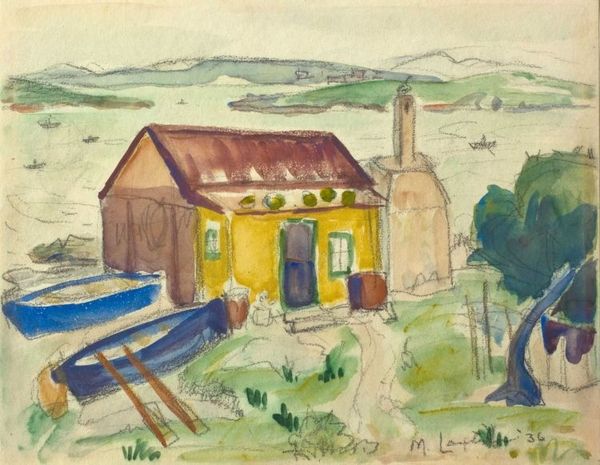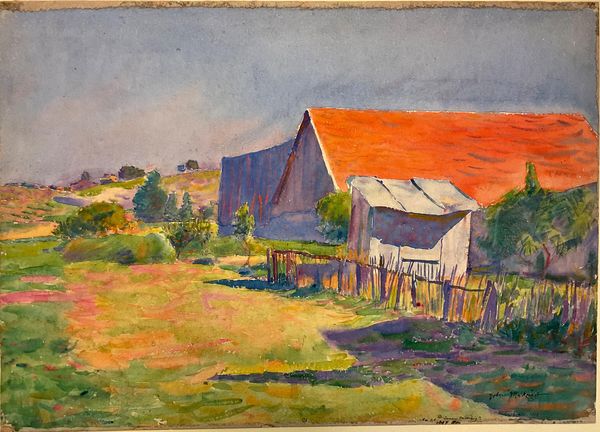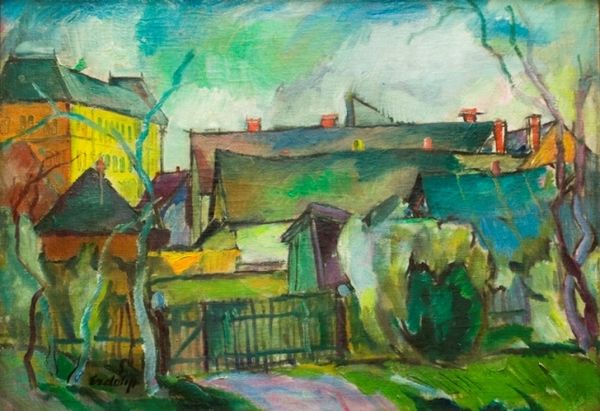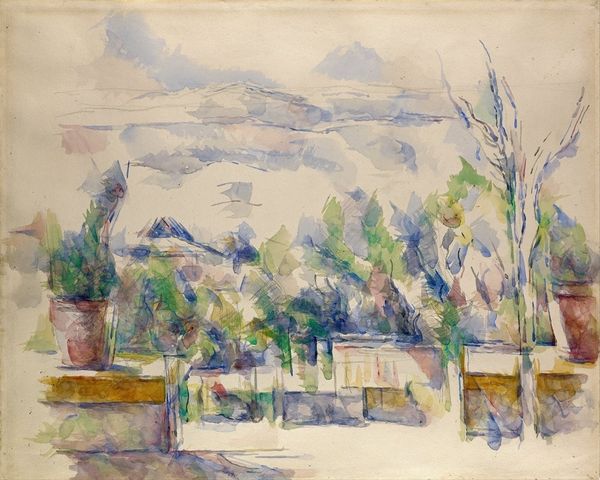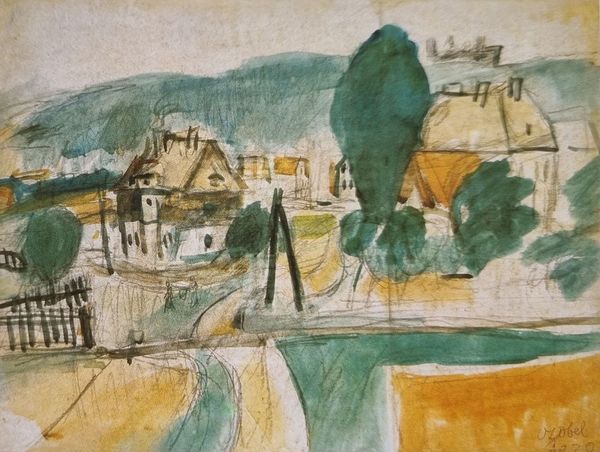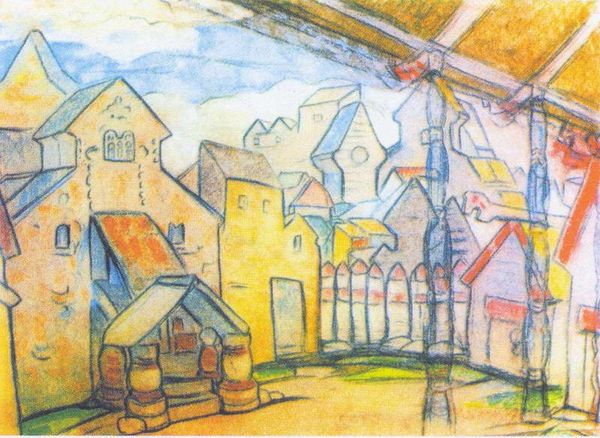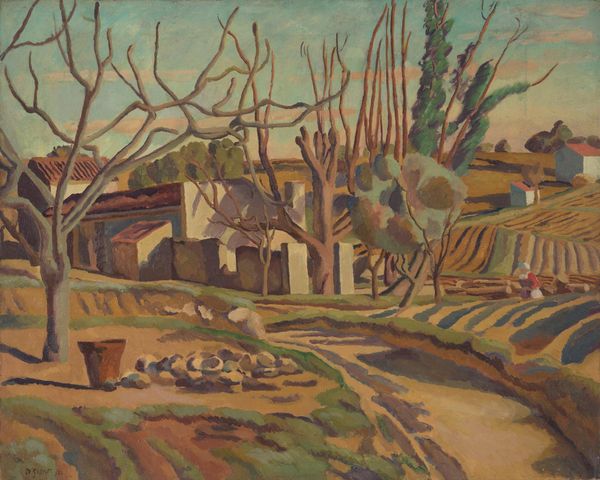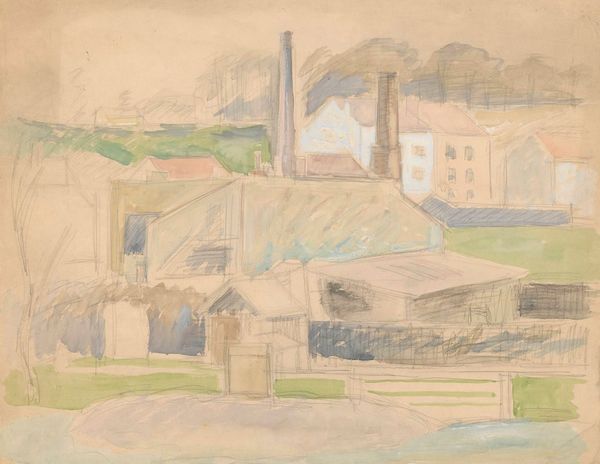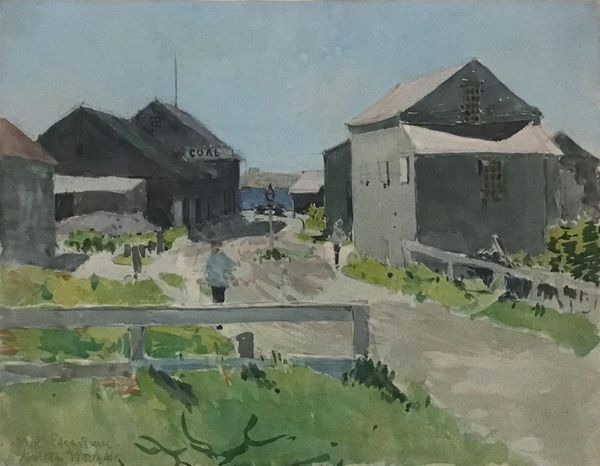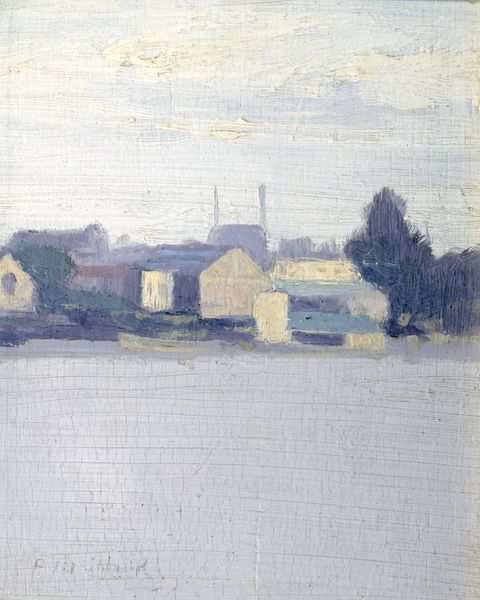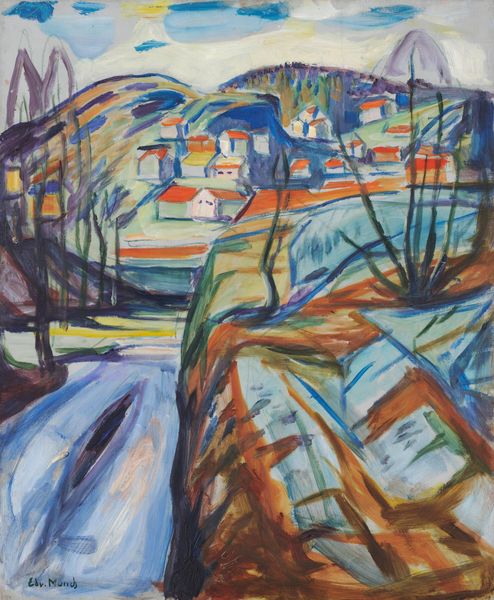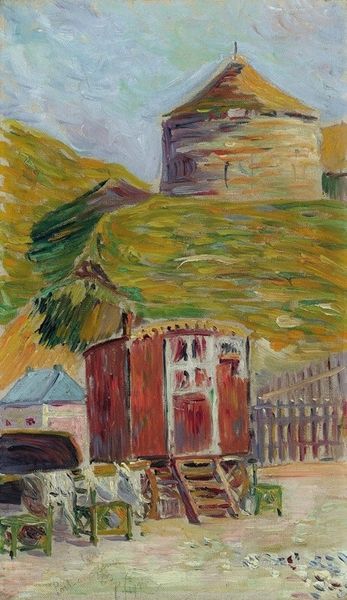
Copyright: Alexandru Ciucurencu,Fair Use
Curator: Here we have Alexandru Ciucurencu’s "Industrial Landscape - Galati," painted in 1962 using oil paint. Editor: My first thought is that it feels so subdued, despite depicting what could be quite a harsh subject—an industrial area. There's a sense of almost quiet melancholy hanging in the air. Curator: Yes, and that subdued atmosphere arises from the considered composition. Note how the industrial buildings are reduced to geometric forms and how their arrangement in the picture plane creates a kind of spatial harmony. The materiality, that impasto, lends the subject tactility. Editor: I think that melancholic air probably springs from more than formal arrangement. The mid-20th century was such a period of intense industrial growth, and this rendering—those slightly faded colors, the blocked buildings that seem somewhat drained of life—can’t help but evoke a sense of environmental impact and loss of the human spirit within the drive for industrial advancement. Curator: While I appreciate your reading, I also think there’s merit in noting that Ciucurencu avoids any sharp social critique here. His brushstrokes and compositional choices maintain an element of detached observation, a visual ordering of the industrial subject matter into planes of form. It remains aesthetically balanced and avoids explicit socio-political commentary. Editor: Perhaps, but such "balance," given the realities of that period, is itself a statement. Choosing to paint this subject matter at all places Ciucurencu within the broader debates surrounding modernization and progress that pervaded Romanian society at the time. The seemingly neutral gaze still holds traces of these debates. Curator: I see your point. What might at first appear as purely formal considerations—color, shape, composition—are never truly divorced from the context within which they were created. Editor: Exactly! An artwork breathes, exists, within these layers of meaning, intention, and social impact, doesn't it? Curator: Yes. So even a landscape, presented seemingly neutrally, like this can offer multiple readings when viewed through different lenses. Editor: Which is precisely why these historical echoes render an artwork all the more powerful to contemporary audiences.
Comments
No comments
Be the first to comment and join the conversation on the ultimate creative platform.
